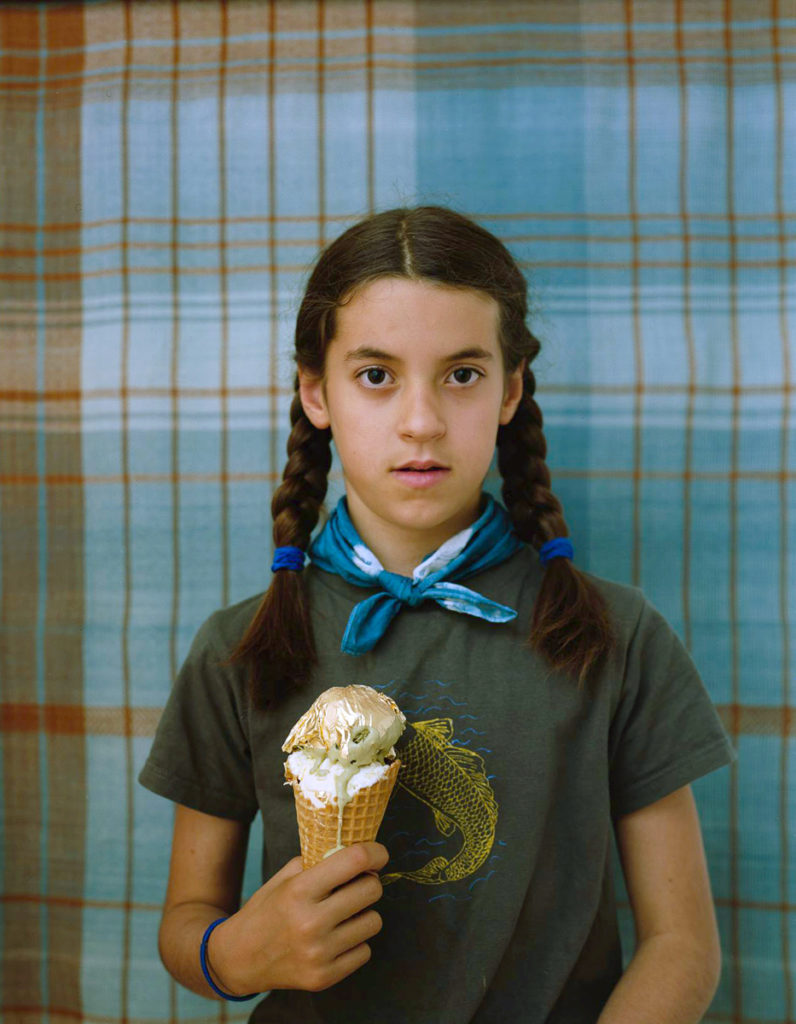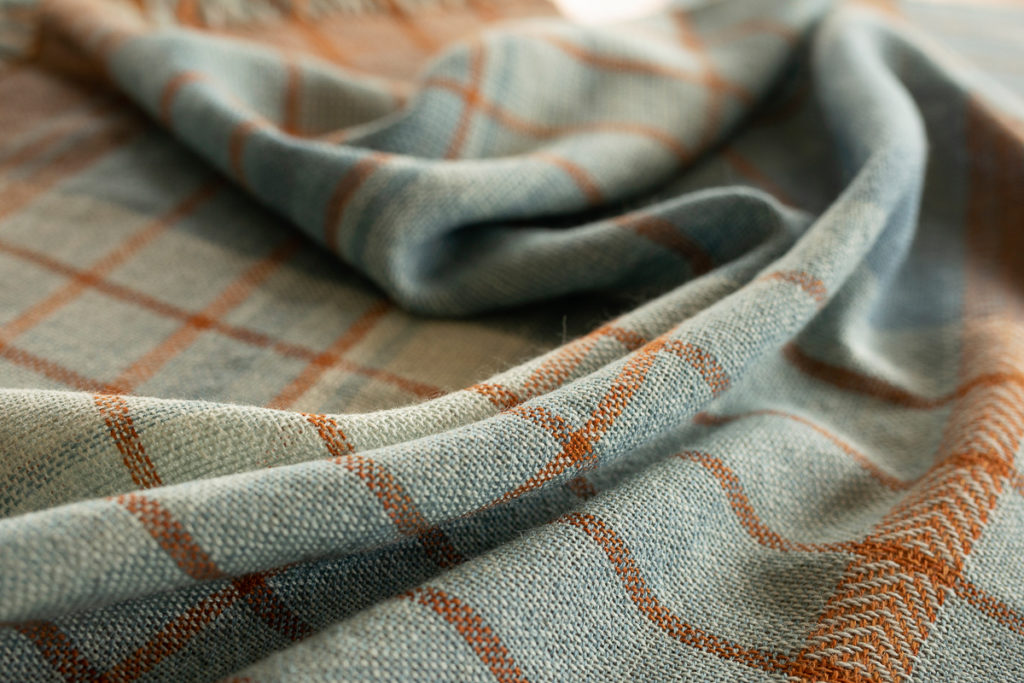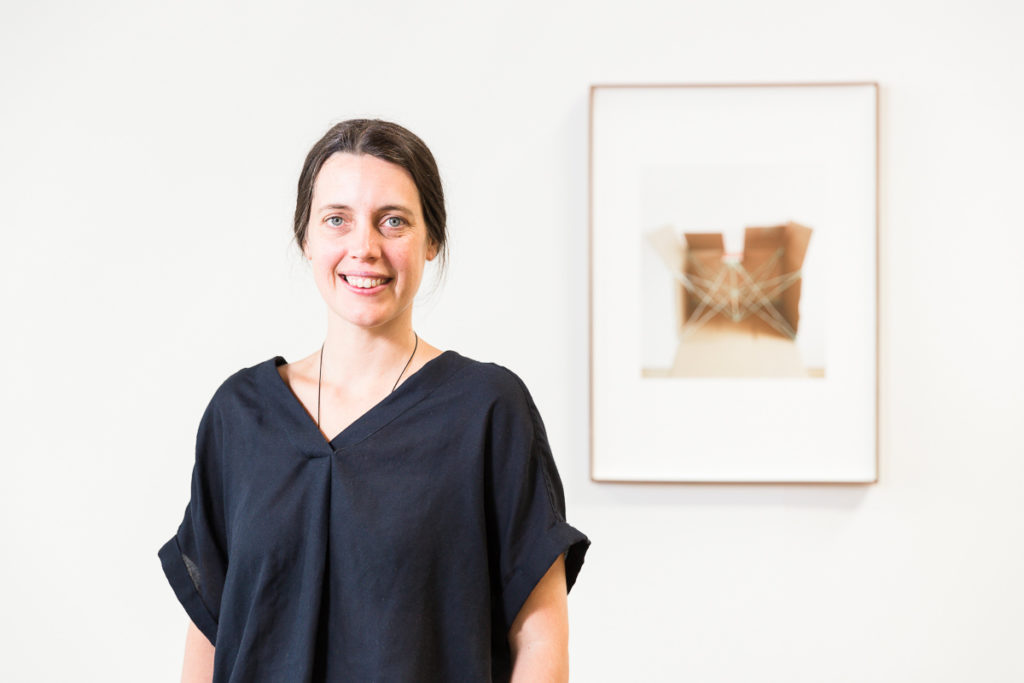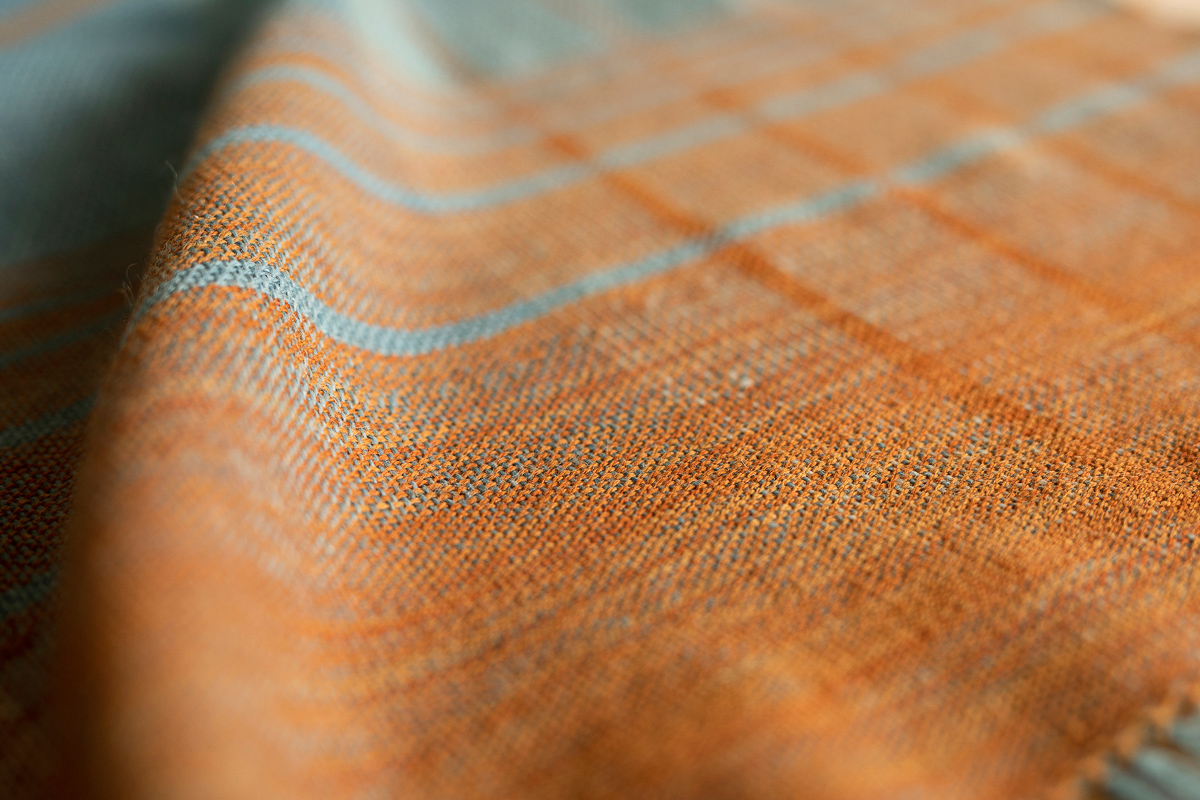Where I work
I work from my home in Eltham in northeast Melbourne in Wurundjeri country. It’s suburban but also known for its bush setting. Outside I can see neighbours’s houses amongst many eucalypts and other bushes. We have chooks, bees and veggies which I can hear and see. Our dog Benji tends to bark if he hears anyone passing on the street. I can hear the hum of cars but it’s pretty peaceful and a good place to concentrate if I ignore all the domestic chores.

What inspired my work
There were a variety of experiences, events and thoughts that prompted me to make this work.
In my practice I primarily work with photography, but, since I was young child, I have also always made crafted objects in my spare time. About 7 or 8 years ago I became fascinated with the idea that botanical colour used to dye various natural materials would become a record of a place in a similar way to which a photograph is. That each contains traces of a place. So, I began to dye yarn to weave and exhibited it alongside my photographs of the same place.
I became fascinated with indigo dyeing as it is a particular process that still remains mysterious to me. It has a similar magic quality that I associate with black and white analogue darkroom photography where there is a visual transformation that happens within seconds before one’s very eyes. I attended some indigo dyeing workshops with master indigo dyer Aboubakar Fonfana where I learnt about fermentation dye vats and how alive and beautiful they are.
At this stage, I had travelled to Japan a couple of times with my husband and ceramic artist Paul Wood before we had children but not with them. We both love that crafts are so central to the culture there and we really wanted to travel back with our kids so they could experience this. I also really wanted to make work there because I had discovered there was a craft centre in the outskirts of Kanazawa called the Kanazawa Yuwaku Sousaku no Mori Centre for Crafts and Culture where you could use proper natural fermentation vats and access 4 and 8 shaft looms.
I received an art research award to make new work and this meant I could go to Japan and make the work.
I hadn’t travelled to Kanazawa before so I tried to think of a meaningful way to come as a stranger to a new place and connect with it in a meaningful way. I thought if I pre-dyed some wool here in Australia with Red Box eucalypts (which are indigenous and grow prolifically around Eltham) before we left, I could then dye some wool in Kanazawa in the indigo vat and then weave it together. I was attempting to weave my experience of two places together by using wool with traces of them both. The cloth embodies and represents the place I am from and attempts to engage in an unfamiliar place and culture.
I used the cloth as a backdrop to make photographic portraits of my family. As tourist and artist, I was drawn to the ice creams with a single precious and magical piece of gold leaf, that were sold in central Kanazawa. They are a nod to the local craft that specialises in gold leaf lacquer. It felt appropriate to have my children enjoy one of these ice creams in their portraits. This can be seen in ‘Matcha and gold leaf for Luella’. She also wears the scarf she made in the indigo vat and the tee-shirt she screen-printed at the Yuwaku Sousaku no Mori Centre.
How I made it
Firstly, I planned how big the cloth would be and calculated how much yarn I would need for it. This involves wrapping the chosen yarn around a ruler to work out how many strands per 2.5cm for both warp and weft.
I then collected Red Box leaves from around my area and dyed half the yarn here at home.
After arriving in Kanazawa I learnt how to use the indigo vats there to dye the other wool.
The very helpful weaving staff at the Yuwaku Sousaku no Mori Centre helped me transfer my idea for the cloth onto a 4 shaft floor loom there. It took me about a week to weave the cloth.
My first attempts to make the photographic portraits in front of the Kannazawa 21st Century Museum of Contemporary Art didn’t go so well. The ice creams melted before they got to their location! I eventually worked out a plan that meant I was able make some photos. At home in my studio in Eltham, Australia! Paul had some gold leaf left over from a past ceramic project and we had a freezer close by with ice cream:-)

What I am working on
I have begun dyeing yarn with leaves from Pound Bend in Warrandyte (also in north east Melbourne) to weave into a blanket for an artist friend. She had a baby last year and made some of her own work in this area that is quite significant to the local Wurundjeri people. I’m hoping I might be able to photograph her with her baby wrapped in the blanket, maybe at Pound Bend, but I might be getting ahead of myself.
Biography

Siri Hayes is a Melbourne based artist who predominantly works in the mediums of photography, video and textiles. She has exhibited widely in Australia and internationally since the early 2000s in exhibitions at galleries such as the National Gallery of Victoria, the Australian National Portrait Gallery and Heide Museum of Modern Art. She travelled with her family on an Australia Council funded residency to Barcelona Spain and has been the recipient of awards such as the Olive Cotton Award for Photographic Portraiture and funding grants from Creative Victoria and the Australia Council. Her work is held in over 20 Australian public collections and many private collections in Australia and around the world.
Website: www.sirihayes.net
Instagram: @sirihayes

